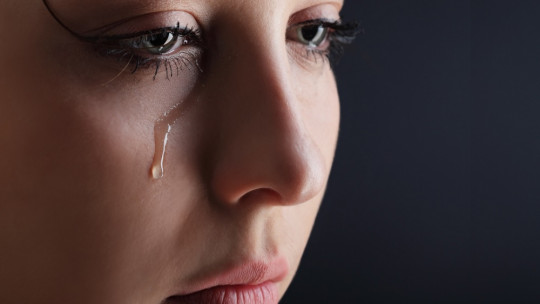Rarely, symptoms of psychosis appear in women who are in the period immediately after childbirth. Although psychiatric manuals do not include puerperal psychosis as a specific disorder, many professionals use this concept to refer to such situations.
In this article we will analyze Symptoms and main causes of puerperal psychosis , as well as other of its basic characteristics. We will also briefly review the therapeutic options currently available to manage this problem.
What is puerperal psychosis?
Puerperal or postpartum psychosis is a type of psychotic disorder that appears in women who have just had a baby, generally in the two weeks following childbirth. It is characterized by typical symptoms of psychosis such as hallucinations, delusions, disorganization of thought behavioral disinhibition and catatonia.
In psychotic disorders there is a loss of contact with reality that can manifest in different areas and has variable severity. It is believed that there is a strong genetic influence that determines the development of psychosis symptoms.
This form of psychosis was described by the German obstetrician Friedrich Benjamin Osiander in 1797. In the past, puerperal psychosis was attributed to infections, thyroid disorders or eclampsia, a convulsive disorder of pregnancy; Although these hypotheses have been ruled out (except thyroid), the causes remain unclear.
It is a relatively rare alteration, since affects 1 in every 1,000 women who give birth. In comparison, postpartum depression, a subtype of major depressive disorder, occurs in approximately 15% of mothers. Although psychotic symptoms may appear in the context of postpartum depression, they are different disorders.
The DSM manuals do not include the diagnosis of puerperal psychosis; Using these guidelines, these cases should be classified as “Psychotic disorders not otherwise specified.” In the ICD-10 we find the category “Mental and behavioral disorders in the puerperium”, which also includes postpartum depression.
Common symptoms and signs
The reported symptoms and observable signs of puerperal psychosis vary greatly depending on the specific case, and even throughout the course of the disorder in the same person. Opposite symptoms, such as euphoria and a depressive state, sometimes occur together.
The most common early signs of postpartum psychosis They include the appearance of feelings of euphoria, a reduction in the amount of sleep, mental confusion, and verbosity.
In addition to being classifiable in a psychotic-type condition similar in nature to that of schizophrenia or schizoaffective disorder, the usual symptoms of puerperal psychosis sometimes They also resemble those of mania and depression the main mood alterations.
Causes and risk factors
Research reveals that puerperal psychosis It is associated with schizophrenia, bipolar disorder and schizoaffective disorder ; About a third of women with these disorders suffer severe psychotic episodes after childbirth. Additionally, people who experience postpartum psychosis have a 30% chance of having another episode in subsequent pregnancies.
It is believed that there is a genetic component to this disorder, since the fact that a close relative has been diagnosed with puerperal psychosis increases the risk of developing it by approximately 3%. Family history of depression during pregnancy or postpartum, psychotic-affective disorders and thyroid dysfunctions are also risk factors.
However, half of women who suffer from puerperal psychosis do not have any risk factors; A hypothesis that could explain this would be the one that associates this disorder with hormonal and sleep cycle changes that occur after childbirth. New mothers appear to be more likely to develop this type of psychosis.
Treatment of postpartum psychosis
When a case of postpartum psychosis is detected, the most common thing is that the hospital stay is prolonged, or that the mother is hospitalized again. In general, the management of this alteration is carried out through pharmacotherapy, although there are emergency psychological intervention programs for psychosis that can be very useful as a complement.
Among the medications used to treat this alteration, two categories stand out: antipsychotics and mood stabilizers , reference psychotropic drugs in bipolar disorder. Antidepressants may also be helpful in managing symptoms such as depressed mood, irritability, sleep difficulties, and cognitive problems.
Cases resistant to pharmacological treatment that are also serious, such as those that carry a clear risk of suicide, are sometimes treated with electroconvulsive therapy.
Most people who suffer from this disorder recover completely within six months to a year, while the severity of the symptoms usually decreases significantly before three months after giving birth. Suicide risk remains high during recovery period.









